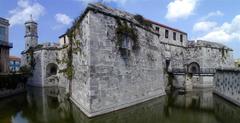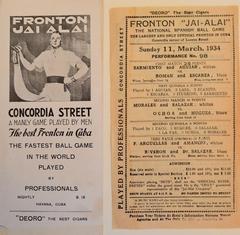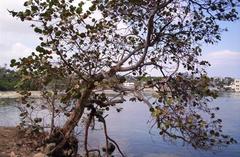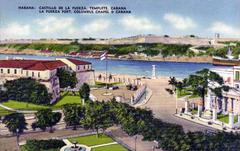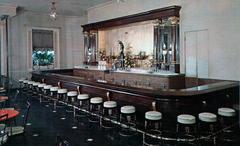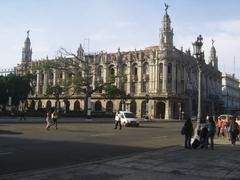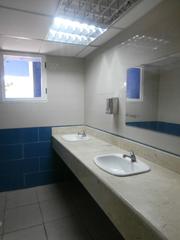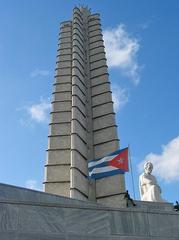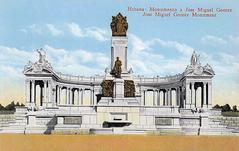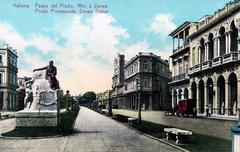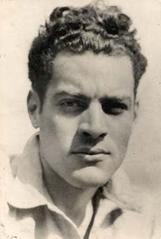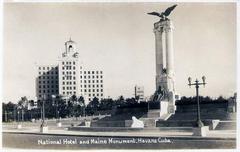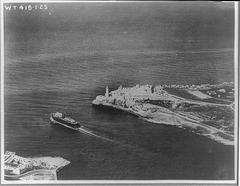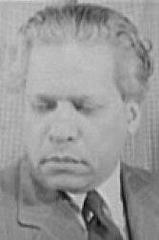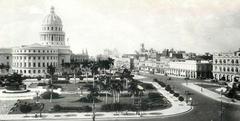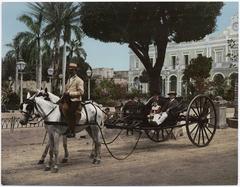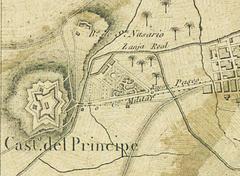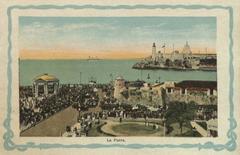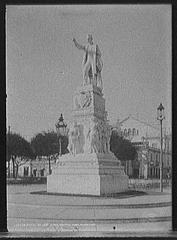Cine Campoamor, Havana Province, Cuba: Visiting Hours, Tickets, and Visitor Guide
Date: 14/06/2025
Introduction
Cine Campoamor, also known historically as Teatro Campoamor, is one of Havana’s most iconic cultural landmarks. Nestled near the Capitolio in central Havana, its story is a microcosm of Cuba’s rich artistic heritage, urban evolution, and the multifaceted challenges of historic preservation. Although currently closed and in a state of ruin, Cine Campoamor continues to captivate travelers, historians, and architecture enthusiasts alike. This comprehensive guide provides all the essential information for visitors, from historical background and current status to practical tips for exploring Havana’s surrounding cultural treasures.
Table of Contents
- Introduction
- History and Cultural Significance
- Architectural Features
- The Golden Age and Cultural Impact
- Decline and Current Status
- Visiting Hours, Tickets, and Accessibility
- Restoration Efforts and Prospects
- Nearby Attractions and Travel Tips
- Timeline of Key Events
- Frequently Asked Questions (FAQ)
- Conclusion
- References
History and Cultural Significance
First inaugurated in 1921, Cine Campoamor was named in honor of Spanish poet Ramón de Campoamor, reflecting the strong cultural ties between Cuba and Spain during the early 20th century (Cubacute). Built on the ashes of the earlier Teatro Albizu, destroyed by fire in 1918, Campoamor quickly became a hub of Havana’s vibrant entertainment scene, hosting operettas, zarzuelas, variety shows, and, later, pioneering sound cinema.
Throughout its history, Cine Campoamor played host to legendary performers and served as a gathering place for Havana’s intellectual and artistic elite. Its legacy embodies the city’s evolution from a cosmopolitan hub to a city facing the realities of economic and political change (Cinema Treasures).
Architectural Features
Cine Campoamor is an outstanding example of early 20th-century Cuban architecture, blending neoclassical and Beaux-Arts elements. The three-story building originally accommodated nearly 2,000 spectators in a horseshoe-shaped auditorium, renowned for its acoustics and ornate details such as gilded moldings, bronze railings, and elegant ornamentation (Cubacute). The façade, marked by symmetry and grandeur, still stands as a testament to Havana’s golden age.
The Golden Age and Cultural Impact
During the 1930s and 1940s, Cine Campoamor was at the heart of Havana’s cultural renaissance. It showcased performances by acclaimed artists such as Rita Montaner and Lola Flores, and introduced Cuban audiences to international cinematic milestones like “The Jazz Singer”—the first sound film shown in Cuba, in 1928 (Cubacute; DPLA). The theater also became known for its satirical revues and its role as a forum for political and social commentary.
Beyond entertainment, Cine Campoamor helped democratize access to the arts, hosting film festivals, public discussions, and educational programs (Granma).
Decline and Current Status
Following the Cuban Revolution, Cine Campoamor—like many of Havana’s historic theaters—fell into decline due to shifting economic priorities and urban neglect. By 1965, the building was closed due to structural concerns. Since then, it has been abandoned and is now in a precarious state, with reports of partial collapses and ongoing deterioration (Joe.in; The Cuban History).
The building is currently fenced off, inaccessible to the public, and considered unsafe for entry. Despite its ruin, Campoamor remains an evocative symbol of Havana’s cultural resilience and the urgent need for heritage preservation (Andrew L. Moore Photography).
Visiting Hours, Tickets, and Accessibility
Is Cine Campoamor open to the public?
No. As of June 2025, Cine Campoamor remains closed due to safety concerns. There are no official visiting hours or ticket sales, and entering the building is both illegal and dangerous.
Can I view the building from the outside?
Yes. Visitors may view and photograph the exterior from public streets during daylight hours. The structure is located at the intersection of Industria and San José, close to the Capitolio and other major landmarks (Cinema Treasures).
Accessibility:
The building is not accessible to those with mobility limitations, and all visitors are urged to respect fencing and warning signs.
Tours:
Some walking tours of Old Havana include exterior views of Cine Campoamor, providing historical context but not interior access.
Restoration Efforts and Prospects
While restoration of Cine Campoamor has been discussed for decades and championed by prominent advocates, including the late city historian Eusebio Leal, there are currently no active restoration projects or secured funding (Fotos de la Habana). The building’s continued deterioration underscores the challenges facing heritage preservation in Havana, despite the successful rehabilitation of nearby landmarks like the Capitolio.
Nearby Attractions and Travel Tips
Nearby Sites:
- Capitolio Nacional: Havana’s iconic neoclassical government building, open for guided tours.
- Gran Teatro de La Habana: Renowned for ballet, opera, and its opulent architecture.
- Museum of Fine Arts: Home to Cuban and universal art collections, including the former site of Teatro Albizu.
Travel Tips:
- Visit during daylight hours for safety and better photographic conditions.
- Wear comfortable shoes for walking and navigating uneven streets.
- Do not attempt to enter Cine Campoamor; enjoy its façade from a respectful distance.
- Combine your visit with stops at other restored theaters and museums for a comprehensive cultural experience.
Timeline of Key Events
- 1870: Teatro Albizu inaugurated.
- 1918: Teatro Albizu destroyed by fire.
- 1921: Teatro Campoamor inaugurated near the Capitolio.
- 1928: Cuban premiere of “The Jazz Singer.”
- 1930s–1940s: Golden age; major venue for theater and cinema.
- 1965: Closure due to structural concerns.
- 2000s–2020s: Remains in ruins; restoration aspirations persist (Cinema Treasures; Cubacute).
Frequently Asked Questions (FAQ)
Q: Can I enter Cine Campoamor?
A: No. The theater is closed and structurally unsafe; only exterior viewing is permitted.
Q: Are tickets required to see Cine Campoamor?
A: No tickets are required, as the site is not open to the public.
Q: What is the best way to see Cine Campoamor?
A: View and photograph the building from the street during the day. Consider joining a walking tour for historical insights.
Q: Are there any restoration plans?
A: Restoration has been discussed but, as of mid-2025, no active projects or funding are in place.
Q: What other theaters in Havana can I visit?
A: Explore the Capitolio, Gran Teatro de La Habana, and the Museum of Fine Arts for restored cultural experiences.
Conclusion
Cine Campoamor’s story mirrors the triumphs and tribulations of Havana’s cultural landscape. From its early years as a glamorous neoclassical theater and cinema to its poignant present as a haunting urban relic, Campoamor symbolizes both the enduring spirit and the fragility of Cuba’s artistic heritage. While the original theater remains closed and in ruins, its legacy endures through ongoing interest, advocacy, and educational efforts. Visitors can honor this legacy by exploring Havana’s vibrant cultural districts, supporting heritage preservation, and engaging with the rich stories embedded in the city’s architectural fabric.
For up-to-date information on restoration progress, guided tours, and cultural events, consult official tourism resources and local organizations. Download the Audiala app for real-time updates, expert travel tips, and immersive guides to Havana’s historic sites.
References
- Teatro Campoamor, la lenta muerte de un símbolo de La Habana, Cubacute
- Teatro Campoamor, Havana, Cinema Treasures
- Exploring Havana’s Ruined Theatre, Joe.in
- Campoamor Theater in Havana, Cuba, DPLA
- Havana’s Cinemas Between Decay and Hope, OnCuba News
- A Pride and Heritage of Cuba That Disappears: The Campoamor Theater, The Cuban History
- Havana’s Old Movie Theaters, Havana Times
- Cinema Havana, Cuba Absolutely
- Teatro Campoamor Zarzuela Cine Costumbrismo, Fotos de la Habana
- Havana Cinemas: A Cultural Heritage to Be Preserved, Granma
- Havana Cinemas Past, Present and Future, Cuban Art News
- One Day in Havana, EpicNomadLife
- Andrew L. Moore Photography: Campoamor Vista Este

